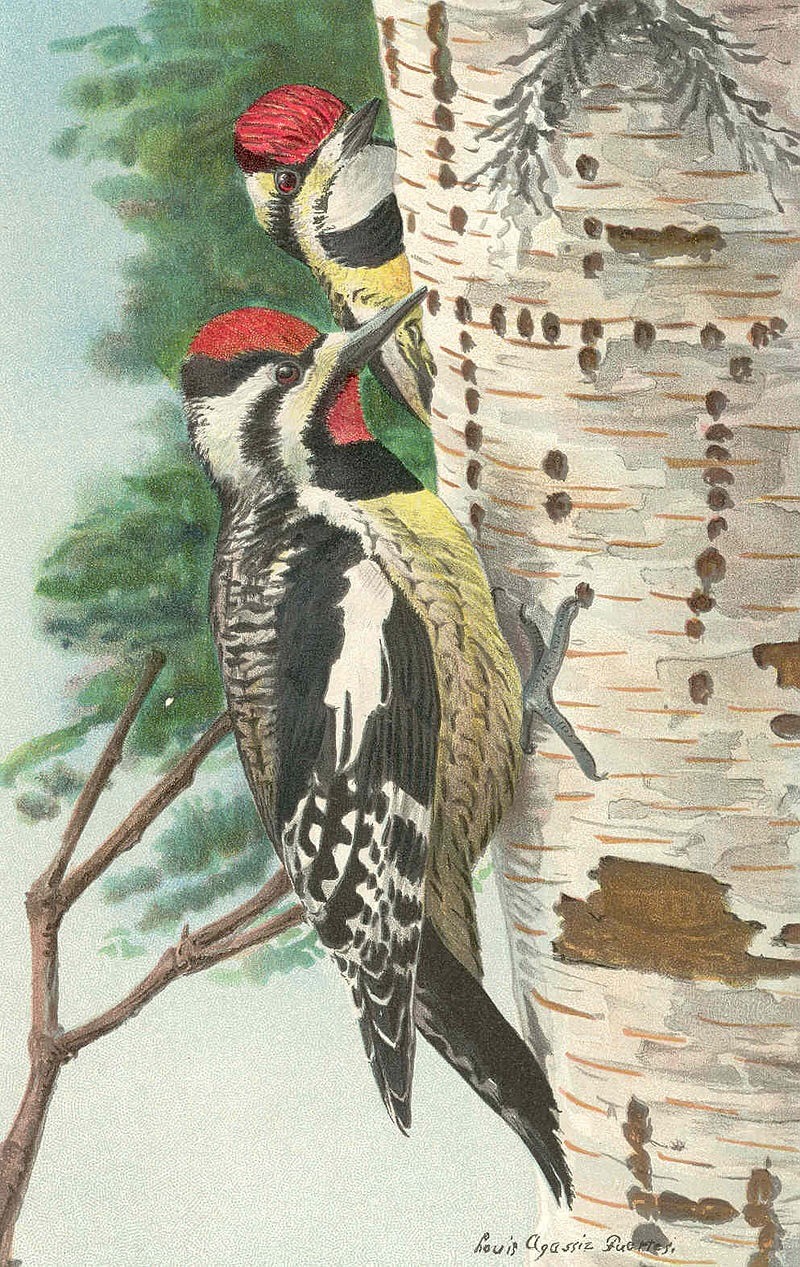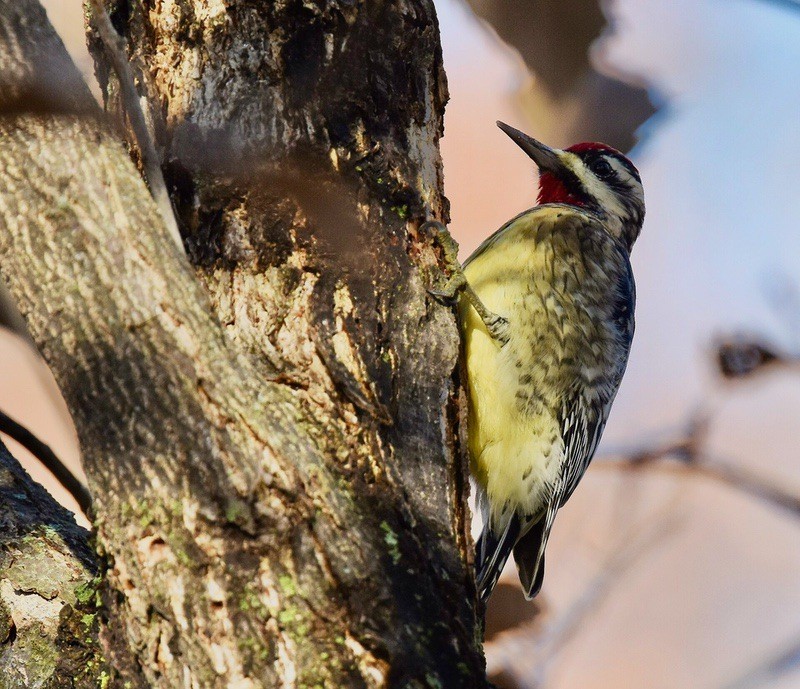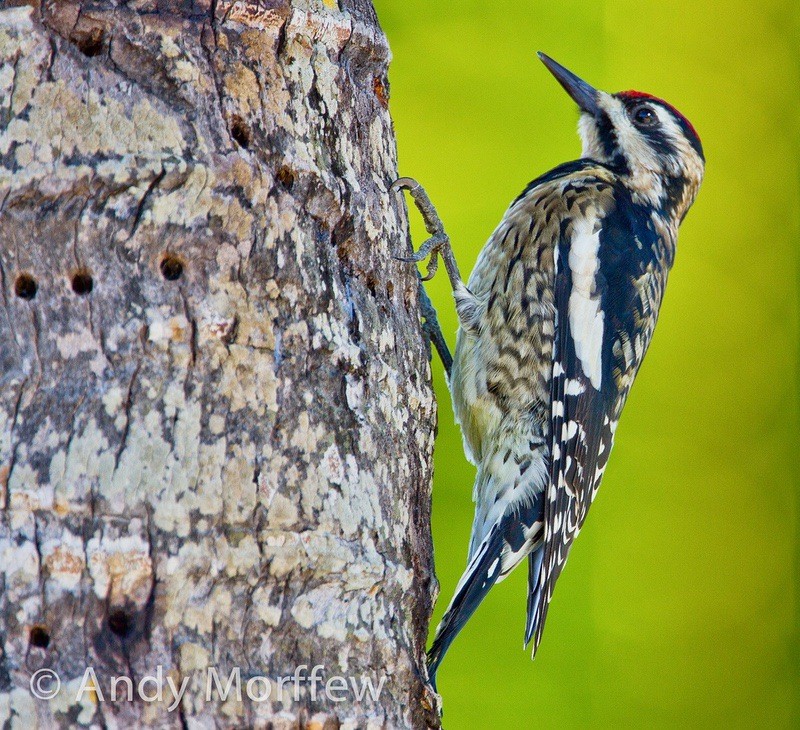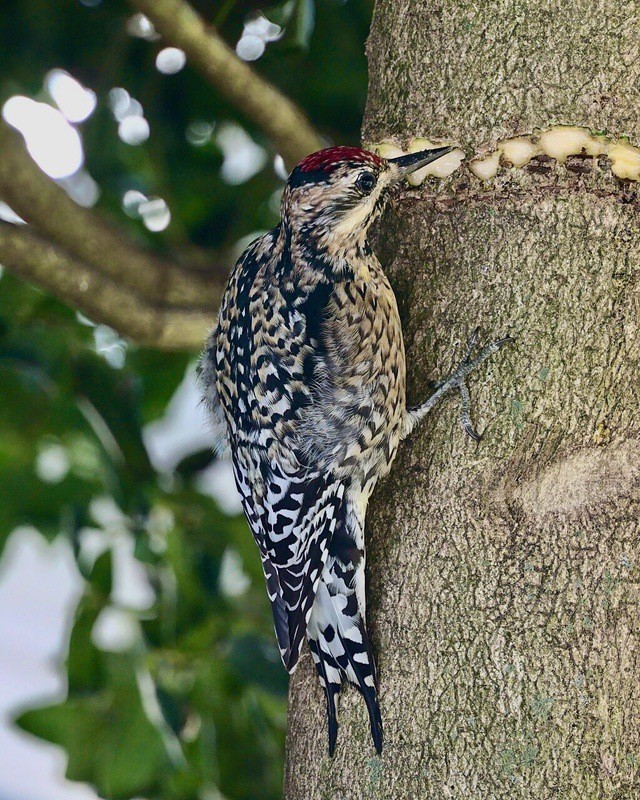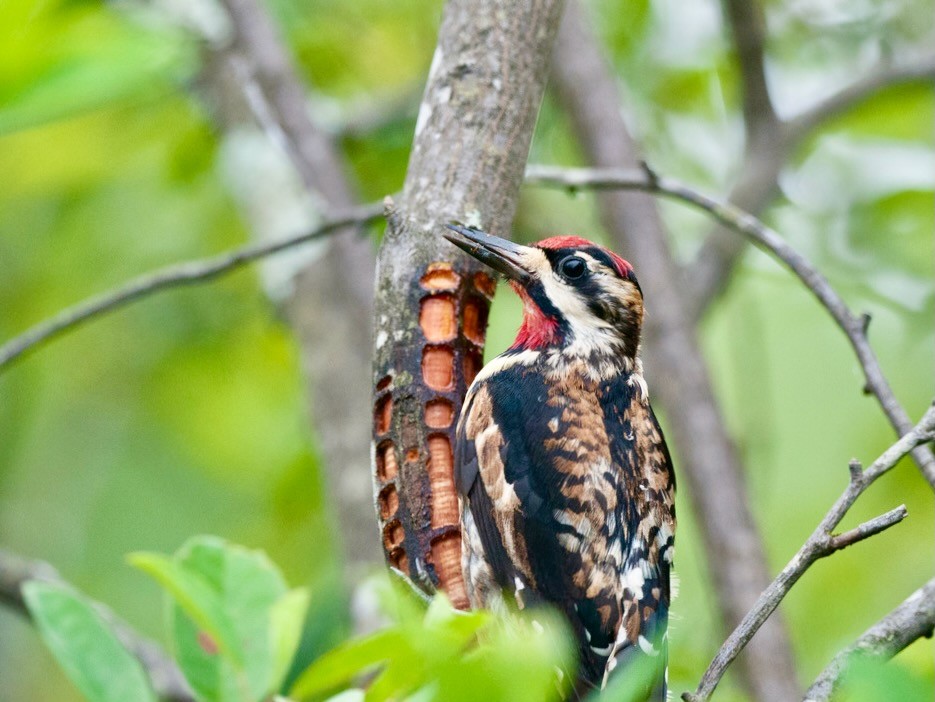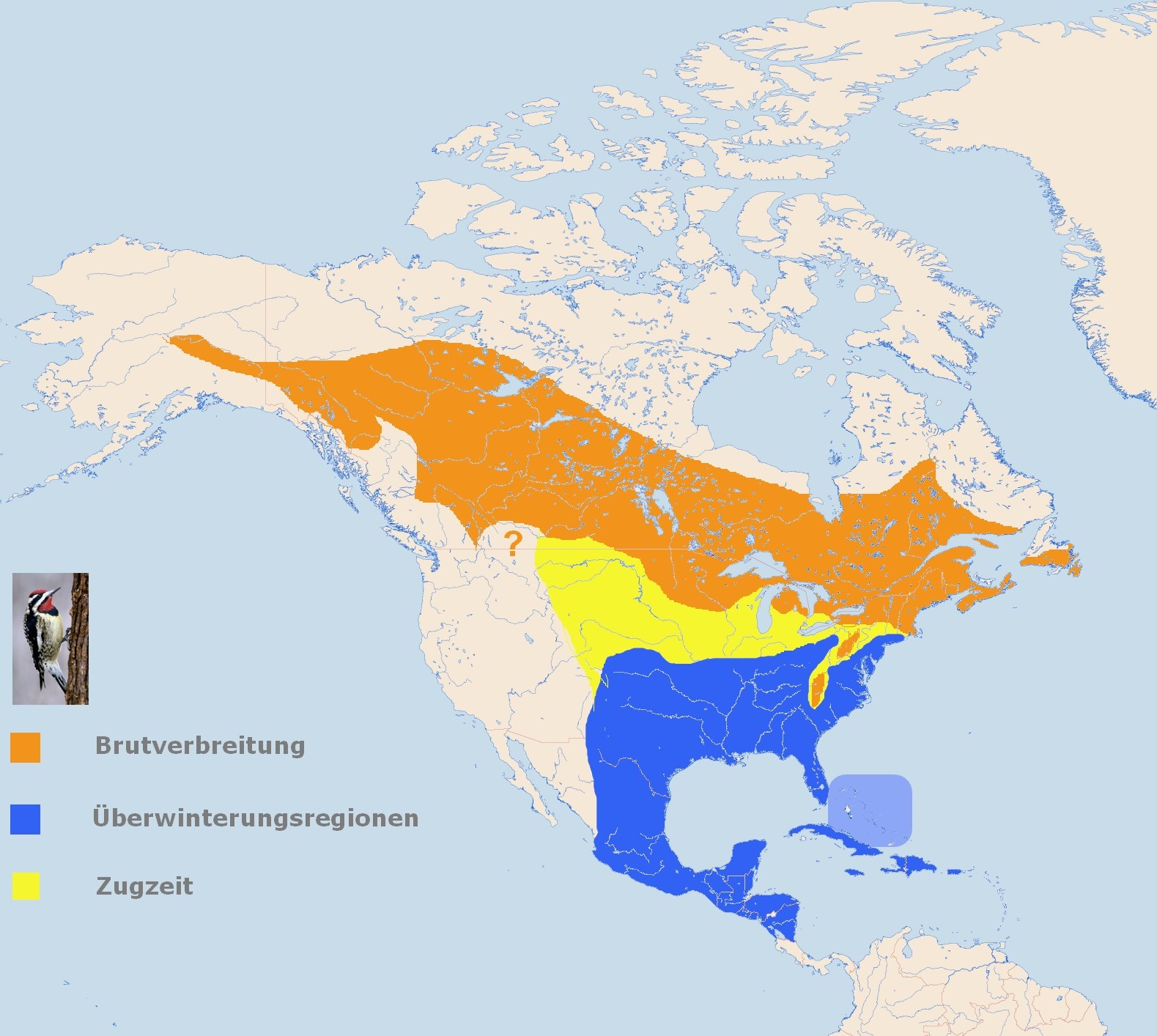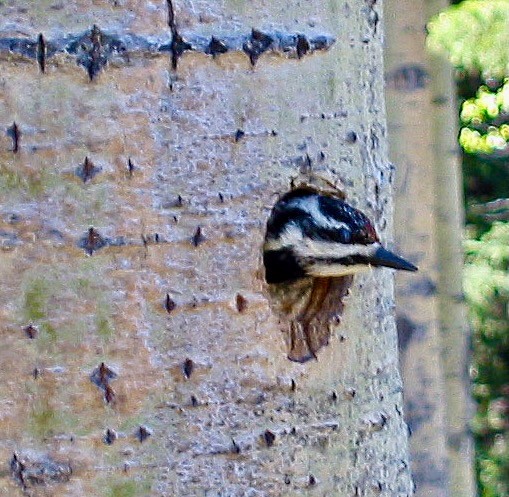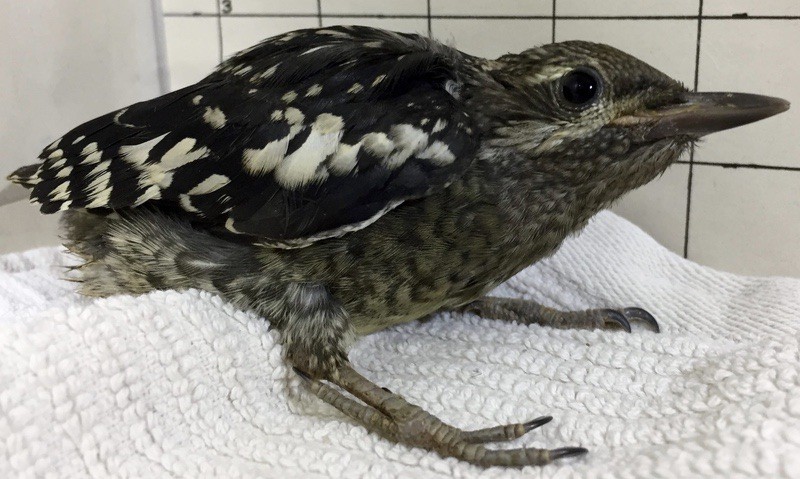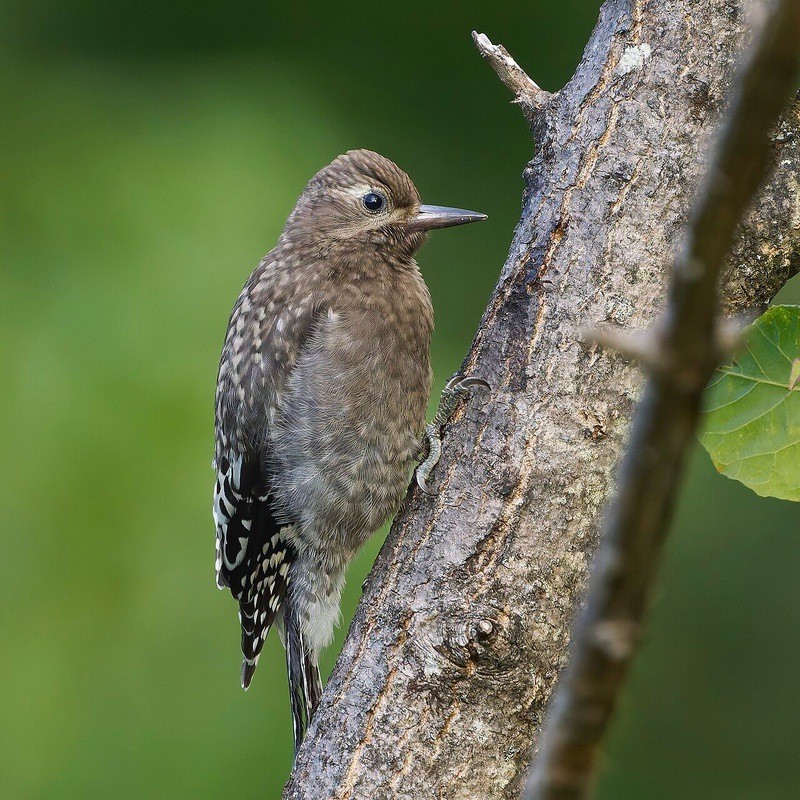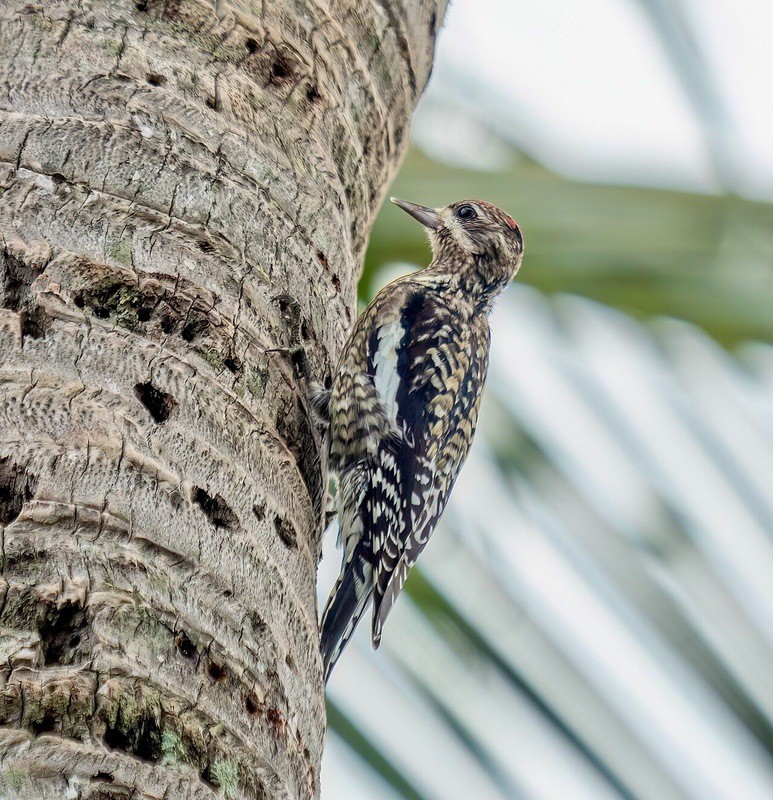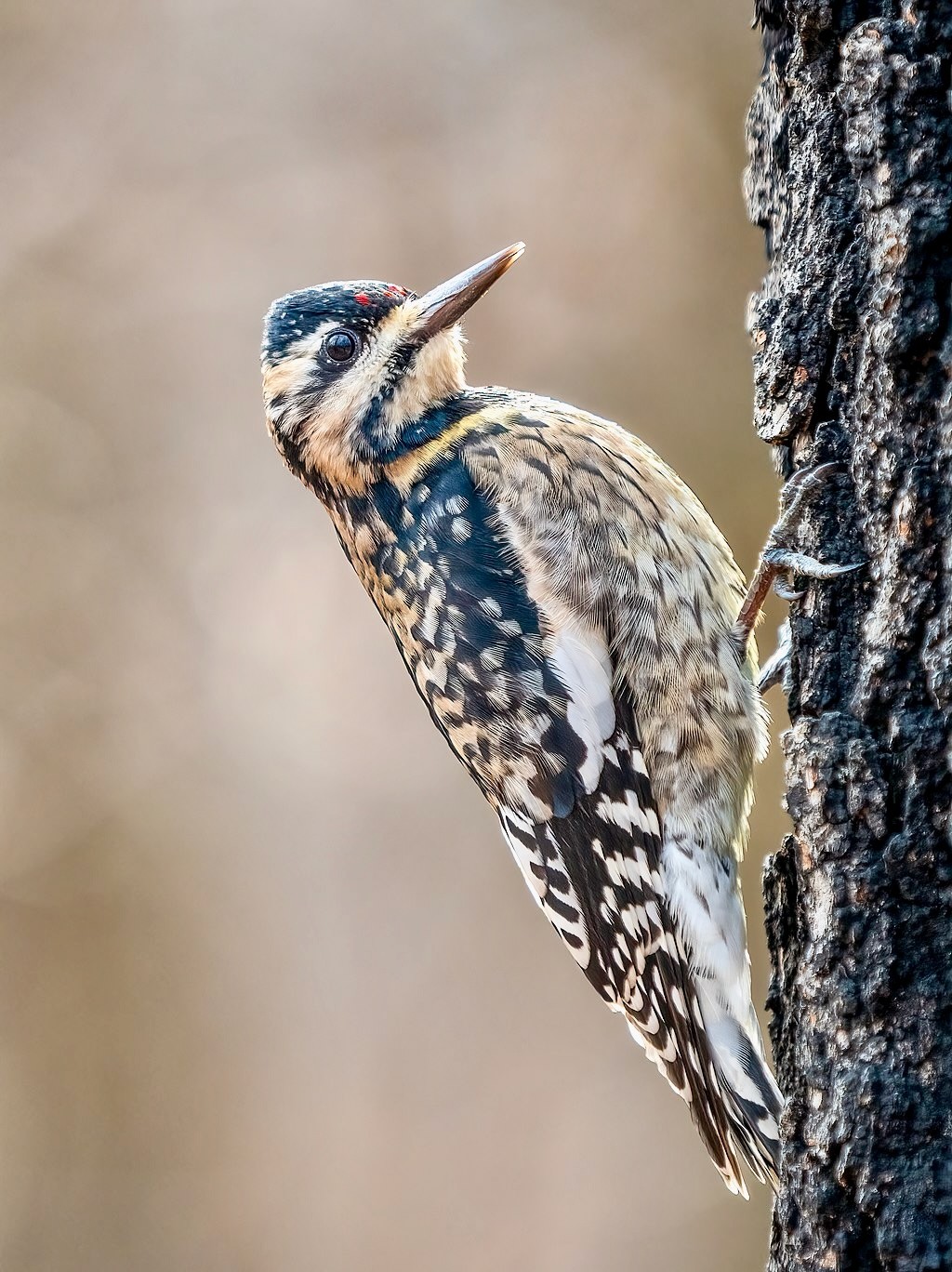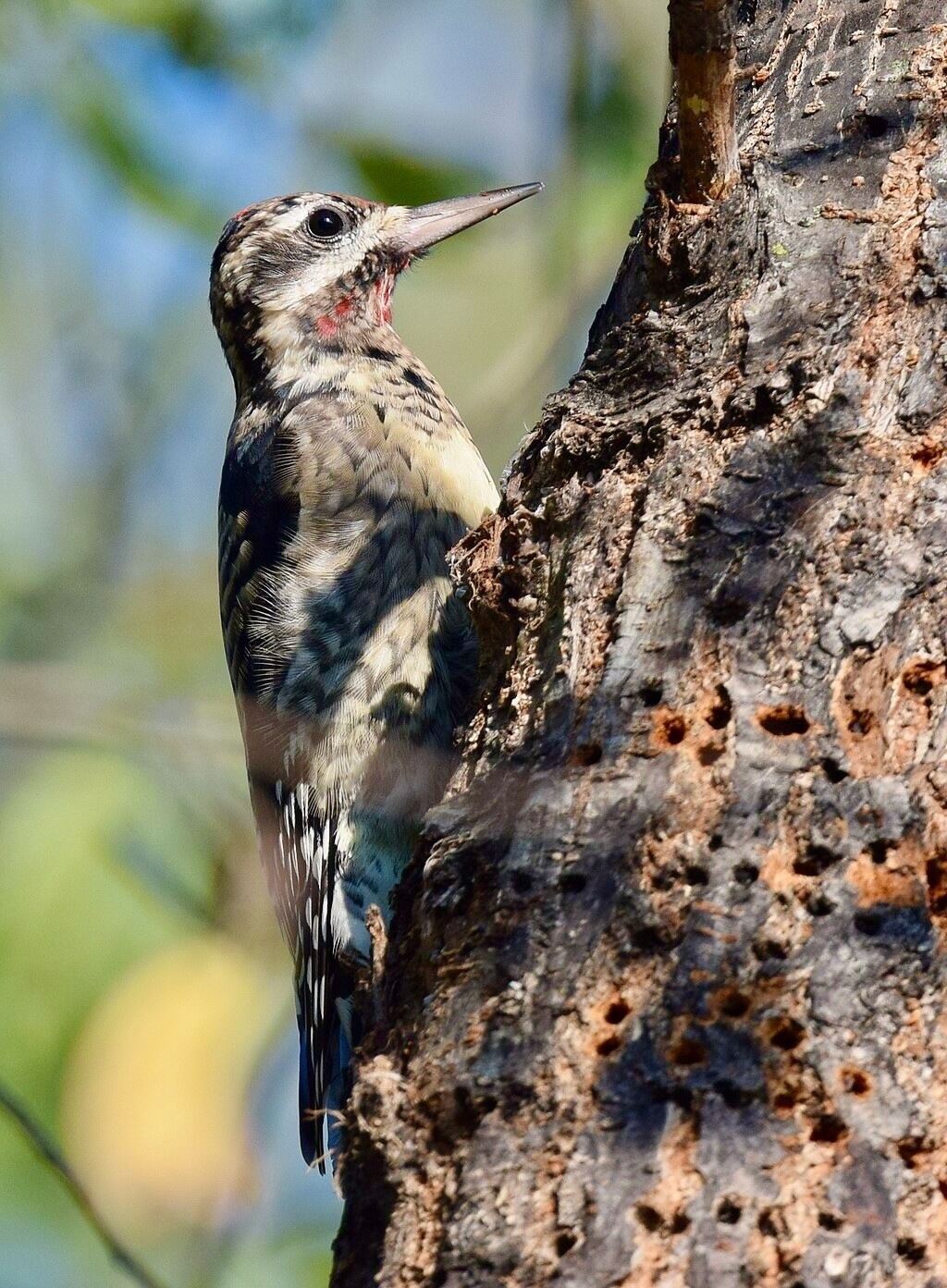Yellow-bellied Sapsucker
The Yellow-bellied Sapsucker was only recorded for the first time at Salter Grove along the Pond Trail on New Year's Day in 2025. However, it has been observed during winter months with some regularity at the larger Pawtuxet Oxboes (Oxbows) Park, about a mile away.
As its name indicates, the Yellow-bellied Sapsucker, consumes sap. In the process, it leaves behind clear traces of this activity on the trunks of both deciduous trees like aspen, birch, cottonwood, maple, poplar, and willow, and conifers such as fir, pine, and spruce.
During late winter and early spring, it drills a series of holes into xylem, the layer of woody tissue that transport nutrient-filled sap up the trunk to nourish the growth of new leaves. During the warmer months, holes do not need to be as deep to reach phloem tissue that contain sugar-rich sap produced by tree foliage, but need to be drilled regularly to keep the sap flowing since the phloem issue attempts to heal.
Insects, small mammals and birds have been observed to exploit the sapwells produced by the Yellow-bellied Sapsucker. It has been proposed that in the absence of flowers, the nectar-sipping Ruby-throated Hummingbird coincides its northward migration with the availability of sapwells. Insects attracted to the sap are often trapped and become a bonus of animal protein for the sapsucker as well as other animals.
Four other woodpecker species have been observed at Salter Grove, namely the Downy Woodpecker, Hairy Woodpecker, Northern Flicker, and the Red-bellied Woodpecker. Besides depending on sap for sustenance, the Yellow-bellied Sapsucker differs from them in two other important ways. It drills into live, albeit diseased, trees to form a nest hole. Unlike the others, it is a long-distance migrant, breeding in eastern Alaska, across Canada and the northern United States and winters in the eastern United States south to the West Indies and Central America.
Rhode island lies at the southern edge of the Yellow-bellied Sapsucker's breeding range, and the northern edge of its wintering range. As of the late 1800's, it was considered to be a common migrant. Although it was not detected during the first breeding bird survey (1982-1987), three instances of breeding were documented in regenerating mixed forest in northwestern Rhode island during the second survey (2015-2019).
For more information:
https://www.allaboutbirds.org/guide/Yellow-bellied_Sapsucker
https://www.audubon.org/field-guide/bird/yellow-bellied-sapsucker
https://en.wikipedia.org/wiki/Yellow-bellied_sapsucker
https://njaudubon.org/invasion-of-the-sapsuckers/
https://cwpd.org/2022/12/01/these-birds-are-suckers-for-sap/
Clarkson, C. E., Osenkowski, J. E., Steen, V. A., Duhaime, R. J., and Paton, W.C. (2023) The Second Atlas of Breeding Birds in Rhode Island. Rhode Island Department of Environmental Management Division of Fish and Wildlife. pp. 210-211.
Howe, Jr., R.H. and Sturtevant, E. (1899) The Birds of Rhode Island. p. 64.

